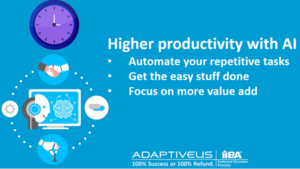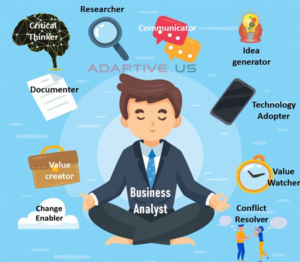Ten Tips for the Young BA
After ten plus years of working as a business analyst, I wanted to highlight a few things that have tremendously helped me become a better BA and advance my career.
As a young professional, I did not have many special talents, skills, or academic education, but I was not going to let those things hold me back from success. I focused on where I knew I would stand out and organized my thoughts into the ten main points below:
- Be on time. For any meetings or working sessions that I was a part of, I made it a habit to be a couple of minutes early. There were life events or uncontrollable circumstances that prevented me from this 100% of the time, but those were one-off occurrences. Generally speaking, I was known to be early and start meetings on time. This showed I was organized and respected the time of others. Additionally, being on time also meant projects and tasks were completed by the time I said they would be. If there were issues that prevented me from hitting a time goal, I would speak up and inform the respective stakeholders in advance so they were aware.
- Take ownership. Anytime a project or task was assigned to me, nobody had to worry or consistently follow up on its completion. I communicated statuses and any obstacles or issues that might impact the final result. This was evident no matter how small the task was. Early on in my career, I was responsible for member service requests. Each interaction was a mini-project to ensure the member got the service they required. Taking ownership of all of my projects and tasks helped build trust with my boss and colleagues. It showed I was ready to handle larger projects and more responsibilities because I excelled with the smaller ones.
- Be flexible. My ability to be flexible about almost anything shined through. My role in one project may not have been the exact same as another one. Priorities and objectives often changed. My colleagues all had different and unique personalities. In some projects, I was the dominant personality when others did not play that role. In other projects, I was the more analytical one when I realized others were observably dominant. Through it all, I remained flexible. I was known as the go-to person for just about anything.
- Nothing underneath me. My first project was a stepping stone to the next one. When I was starting my career, I admittedly was a “yes” person. They could have given me a stamp with “Yes” for my forehead! Before anyone even finished their thought, I said “Yes!”. This helped me get exposure to every single area of my organization and build relationships. Within a short period of time, I could tell you the purpose of each department and why they were necessary for the organization to function properly. I am not saying I could run the department, but I had functional knowledge of their work and what made them tick. I don’t want to give the wrong impression here. As I advanced more in my career, I didn’t have the time to say yes to everything. I learned how to say “no” as my career became more mature. However, when I first started, I wanted exposure to everything and I wanted to show I can handle it.
- Recognize and praise others. I don’t remember accomplishing a goal due to my efforts alone. There were always other people involved. Lots of time in discussions was spent with team members to ensure we were doing the right things. I always made it a point to praise publicly and privately where it was legitimately due. I saw first hand all the hard work that my colleagues put into their daily activities and wanted those efforts recognized. Any time I got praise for doing something, it was only because I had a great team of people supporting me.
Advertisement
- My first project. I tried my best to stay excited and eager to learn and do more. When I was just a part-time employee trying to make a name for myself, I was hungry for anything that came across my desk. I started to treat everything like my very first project. I would ask lots of questions, show willingness to go above and beyond, seek help where I need it, and work with others. Every project after the first one was treated like my first one. This is much more difficult than it sounds because at times, work did become mundane and repetitive. I had to make a conscious effort to see the bigger picture and maintain my level of excitement.
- Open to criticism. I had an open mind if someone gave me constructive criticism. This helped me get better as a professional and build my skills. I actively sought out criticism to ensure I produced things of value to the organization. Long tenured employees, managers, and executives all have different insights into different areas. Their advice helped me see things from a different perspective and ensure I took that into consideration moving forward.
- Be courteous. I cannot think of any point where insulting someone, yelling, making sexually suggestive comments, touching inappropriately, or being plain rude was ever welcomed. I paid attention to my tone of voice and ensured my dialogue was objective to the matter at hand. Disagreements are common and objectively addressing them should be the goal, not trying to tear the other person down. Learning about culture, gender, age, race, religion, or any other characteristic that makes us unique, helped me get to the next level of relationship building. Showing common courtesy, being generally kind, and showing basic respect for someone should not require a whole training initiative.
- Work life integration. I did not seek work life “balance”; where I strictly worked between certain hours and then I strictly lived my personal life during certain hours. My job was part of an overall healthy life; and in order to continue having a healthy life, I needed my job. Sometimes, my best work came from putting in a few hours on a Sunday with some music in the background. Sometimes, I had to handle a personal emergency at the office that took time away from my work. I didn’t get stressed out about those things because I knew the work would get finished and my personal commitments wouldn’t be sacrificed. If responding to an email on a Saturday helped my colleague move on, I did not hesitate to do it.
- Always learning. I was always confident I could learn anything that I needed to help in my career. Today, I see the younger generation spend hours upon hours on social media, video games, and YouTube. I challenge anyone to take any topic in the world you want to learn. Spend one to two hours daily focusing on and researching that topic. The same focus you would give to having fun. Come back in a year and tell me that you are unable to explain the general and functional information of that topic. I dare you! I was amazed at how much I learned by giving it enough focus and time and you will be too.
In conclusion, these ten things made such a positive impact in my career and I know they will do the same for you.








